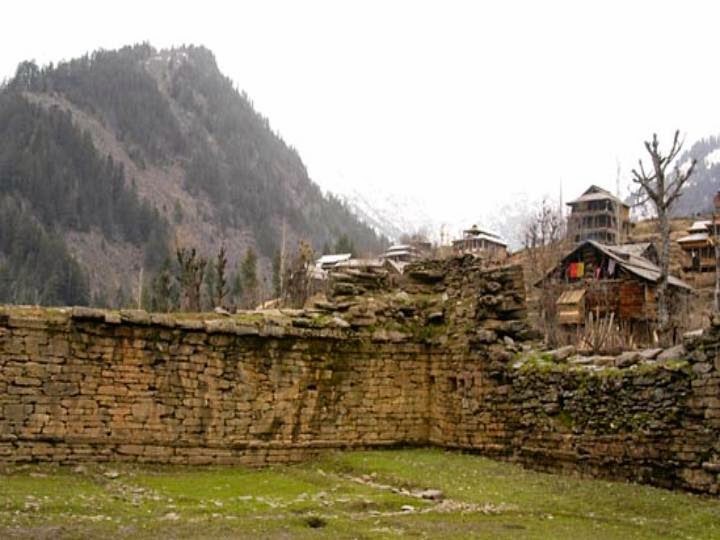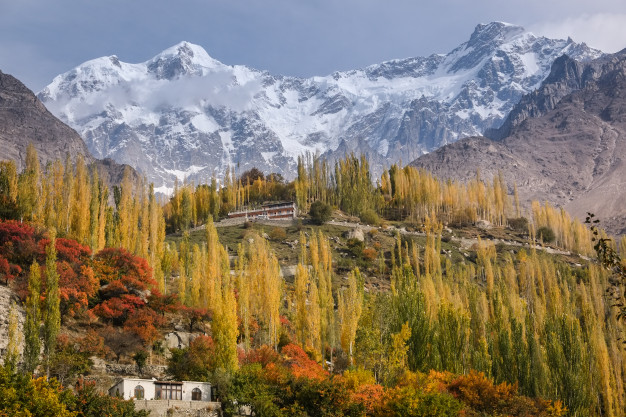I vividly remember that day in school when a simple exercise about map explanation turned out to be a big shocking experience for me. The assignment was to draw the external boundaries of various Indian states and mark important cities therein.
Each student chosen to draw the boundaries of one Indian state would also mark its major cities and explain the state’s historical, geographical and political importance to the whole class.
I was to explain about Jammu Kashmir.
“This is Jammu Kashmir and this is the state’s capital city Srinagar,” I said pointing my little finger towards Srinagar on the map.
“…the famous ‘silk route’ passed through this state which served as the world’s major trade route since ancient times. Jammu, Gilgit-Baltistan, Muzaffarabad, Gulmarg, Mirpur are other important cities of this state. The state has famous pilgrimage centres such as the Sharada Peeth, Amarnath Shrine and Mata Vaishno Devi….” I went on with my erudite explanation about the state.
“So, where do you want to go in Jammu Kashmir?” the teacher asked.
“Hmmm….well, I want to go to Sharada Peeth,” I replied after a brief pause.
I had read that Sharada Peeth was the great centre for learning and was also ancient place for Vedic learning, but this seat of higher knowledge was now in ruins and shambles. Yet, being a student I felt a strong connect with Goddess Saraswati’s abode–the Sharada Peeth, and wanted to visit the shrine.
The teacher smiled and said, “Yes that’s a noble thought but you need to have a passport to go to the Sharada Peeth….”
“Passport? Why do I need a passport to visit an Indian city?” I asked in exasperation.
“Well, the Sharada Peeth is part of Kashmir that is with Pakistan and is now known as the Pakistan-occupied Kashmir (PoK)…so you must seek Pakistan’s permission by taking a visa to visit any place in the PoK,” the teacher explained.
“B…but how can this be true… see this is the map of Jammu Kashmir and here are Sharada Peeth, Srinagar, Jammu, Gilgit-Baltistan, Gulmarg, Mirpur, Muzaffarabad which are all within the territorial limits of this state and a part of India so why do I need a visa and a passport…,” I blurted out.
“Yes this is true but then this truth exists only on paper…in reality a huge portion of our Jammu Kashmir is still with Pakistan which is known as the Pak-occupied Kashmir…so cities such as Gilgit-Baltistan, Sharada Peeth, Mirpur, Muzaffarabad are all under Pakistan’s illegal control ever since India’s independence. And we in India have still not been able to get back this entire region…,” the teacher elaborated and I listened with stunned silence.
When this incident took place I was a student of standard sixth and found it hard to believe that India has not been able to take back its own region from Pakistan.
This was several years back.
Much water has flown through the Jhelum and Indus rivers of Jammu Kashmir since then, but I still find it hard to digest why India has not been able to wrest back its own region– the Pakistan-occupied Jammu Kashmir (PoJK) despite winning four wars against Pakistan.
Ironically, Pakistan that has committed worst forms of human rights violation with the people of Gilgit-Batistan, Muzaffarabad, Mirpur destroyed the centre of learning–Sharada Peeth, and many other parts of PoJK celebrates a “solidarity” day for “Kashmiri people” on February 5.
The Pakistani establishment commemorate this day to reaffirm their commitment to support all kinds of terrorist activities on the Indian side of Jammu Kashmir.
Pakistani politicians, ministers and terrorist leaders take a pledge on this day to provide arms and ammunition to separatists and terrorist outfits operating across Jammu Kashmir to help them continue their proxy war against the Indian security forces and Indian establishment. And then the mainstream media (lame-stream media?) never dares to question Pakistani regime over its sponsorship of terrorism in Jammu Kashmir!
Background
During India’s partition there were two kinds of territories: British India and Princely States. The portion of India that was ruled directly by the British was partitioned as India and Pakistan, and the rulers of princely states were given the option to join either India or Pakistan.
Hari Singh, erstwhile Maharaja of the then princely state of Jammu Kashmir signed the Instrument of Accession with the Indian government on October 26, 1947. With his signature on the Instrument of Accession and India’s subsequent acceptance of it, the entire state of Jammu Kashmir became an integral part of India, which includes Gilgit-Baltistan and other Pak-occupied regions of Jammu Kashmir. And it is in these regions wherein the revered Sharada Peeth lies. Sadly, this ancient and pious pilgrimage site that was the seat of higher vedic learning is now in ruins.
India and Pakistan have fought four wars since 1947, and despite winning all four wars India has let go each opportunity to wrest control of the Pak-occupied Kashmir.
The accession of Jammu Kashmir with India happened through the same process as that of other Princely States so no questions can be raised about the region being an integral part of India. Even the oft-repeated claims of Plebiscite in Jammu Kashmir had become invalid after United Nations said that Pakistan never fulfilled the mandated preconditions before a referendum could be held in the state.
Further, on February 22, 1994 both houses of the Indian Parliament (Lok Sabha and Rajya Sabha) passed a unanimous resolution reaffirming its stand to take back the region of Jammu Kashmir occupied by Pakistan. “On behalf of the People of India…(we) firmly declare that the State of Jammu Kashmir has been, is and shall be an integral part of India and any attempts to separate it from the rest of the country will be resisted by all necessary means… and demands that Pakistan must vacate the areas of the Indian State of Jammu and Kashmir, which they have occupied through aggression and resolves that all attempts to interfere in the internal affairs of India will be met resolutely,” the Parliamentary resolution of February 22, 1994 read in clear terms.
However, simultaneously we let the wretched Article 370 and its illegitimate child Article 35A wreak havoc in Kashmir. The wounds from these twin articles continued to fester over the last seven decades until August 5th, 2019 when Narendra Modi in a decisive move scrapped these two articles.
The ease with which Indian Parliament has ratified the bill to revoke Articles 370 and 35A proves that there’s an overwhelming support for Modi to settle this “Kashmir issue” once and for all.
It is time that the world knows about Sharada Peeth and its importance for Hindus. It’s time Narendra Modi government takes decisive action against blatant human rights violations by Pakistan in Gilgit-Baltistan, Mirpur and Muzaffarabad. The region’s culture, traditions and historical monuments are systematically being destroyed. And the most glaring example is our revered Sharada Peeth.
India cannot shirk its responsibility of protecting its citizens even if those territories continue to be in illegal occupation by Pakistan. It’s time that we initiate diplomatic processes to get back remaining portion of Jammu Kashmir to India.


